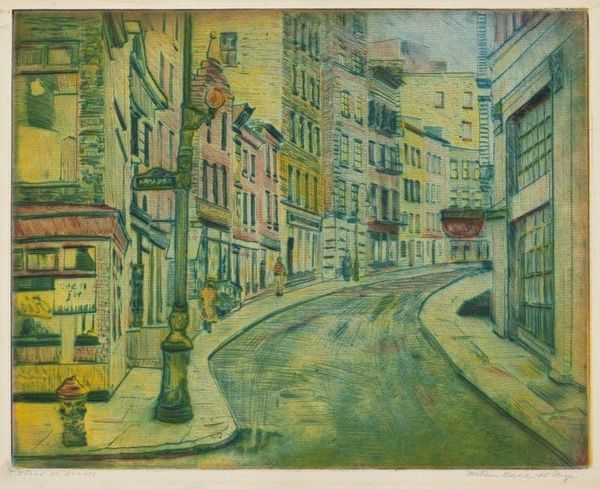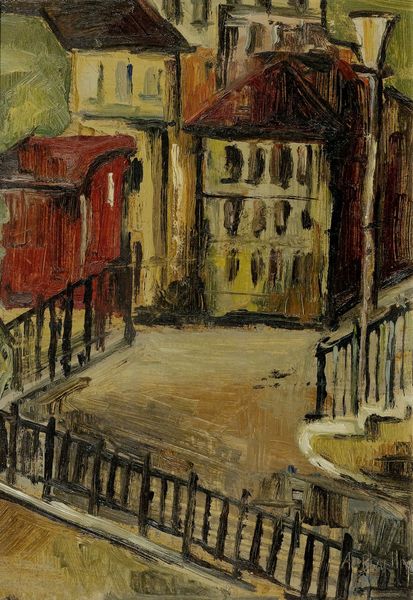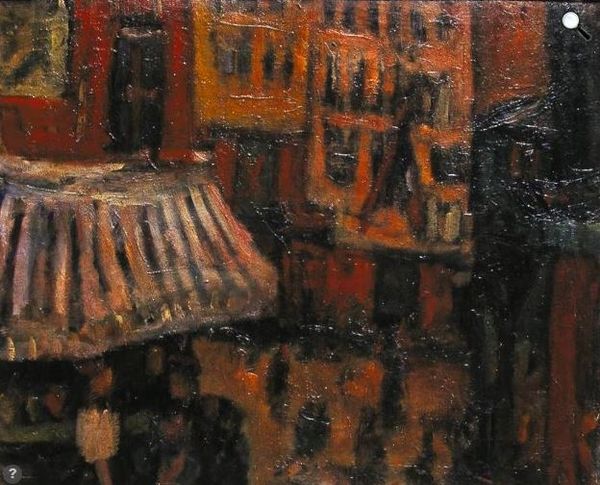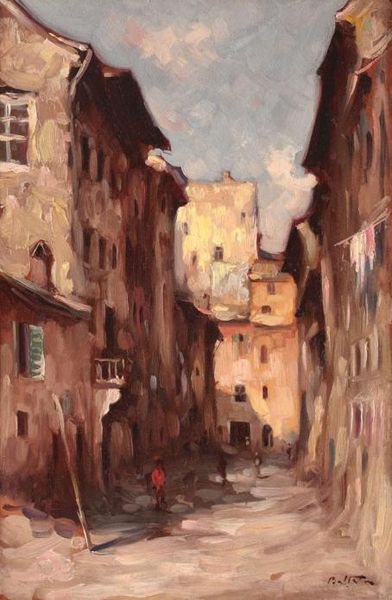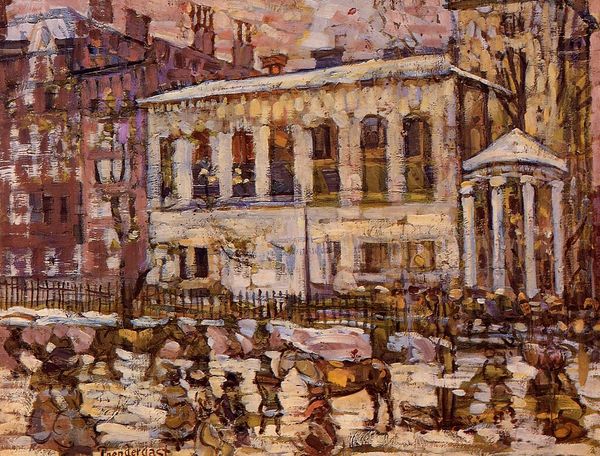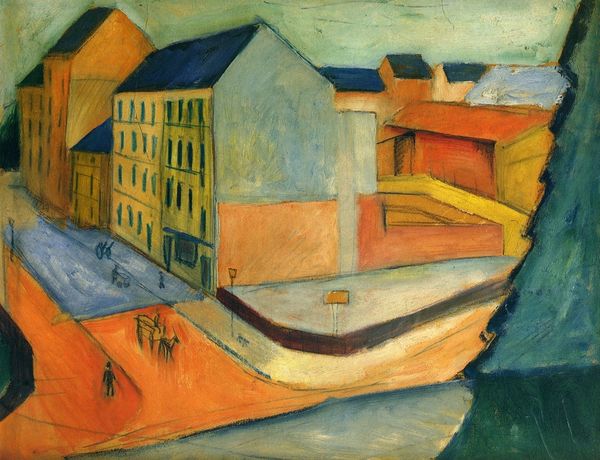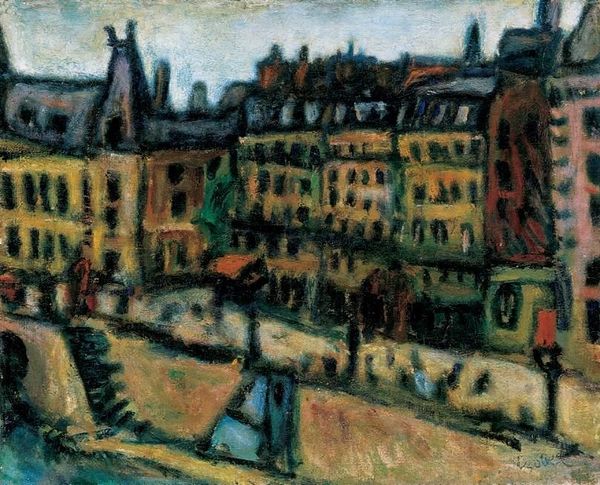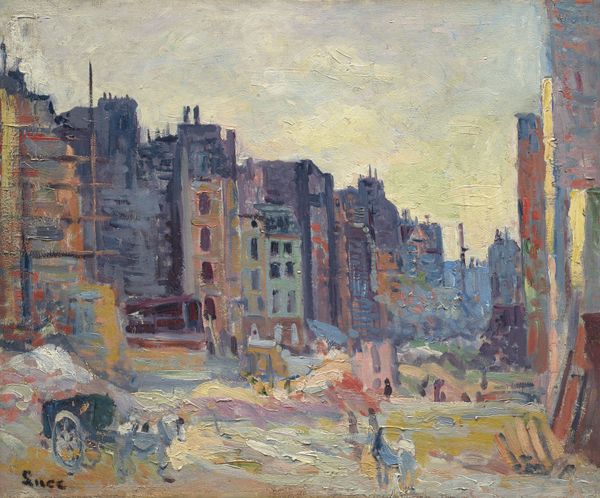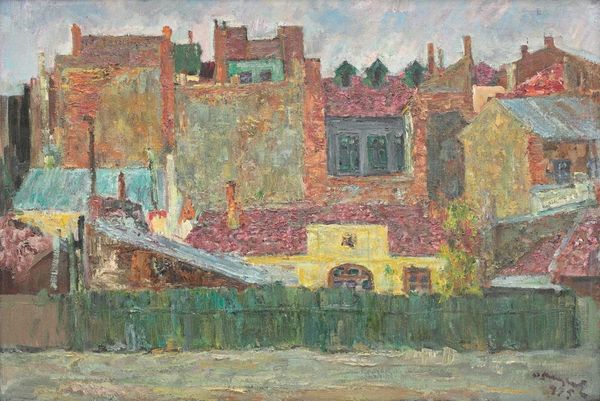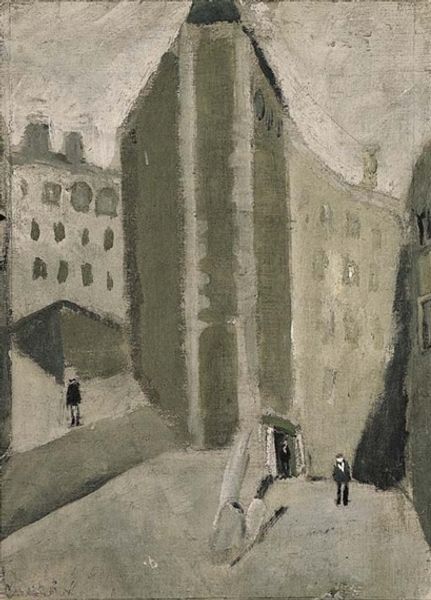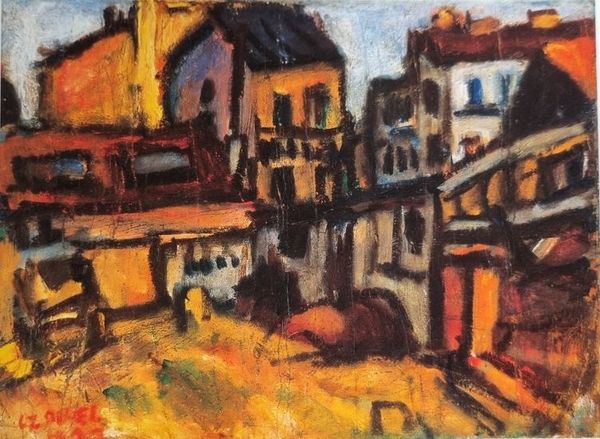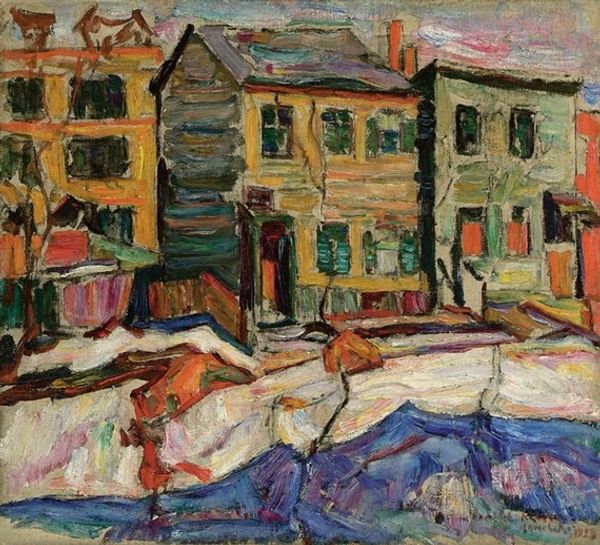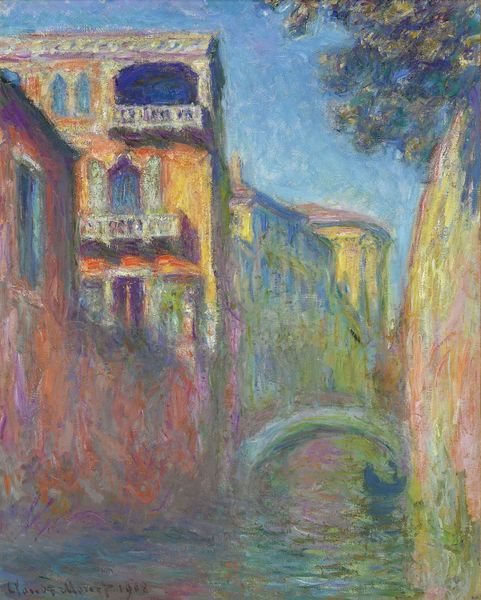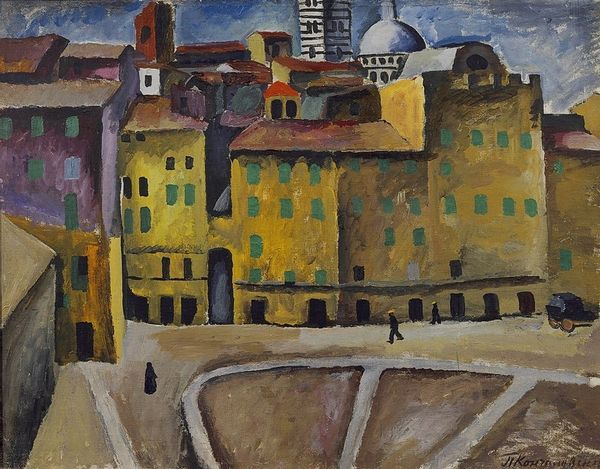
Dimensions: 46 x 62 cm
Copyright: David Burliuk,Fair Use
Editor: So, this is David Burliuk’s “Washington Market” from 1931, done in oil paint. The first thing I notice is how he’s captured the energy of the city, but there's also a grittiness to it. How do you interpret this work? Curator: I see a commentary on urban life during the Depression era, reflecting the artist's engagement with social issues. Burliuk’s style, influenced by Expressionism and the Ashcan School, allowed him to depict not just the appearance of Washington Market, but also the atmosphere of a working-class neighborhood. Look at the density, the colors - what do they evoke for you in terms of lived experience? Editor: I guess it makes me think about the inequalities present even within urban spaces. There’s commerce, but also an undercurrent of something… tougher. Is that intentional, do you think? Curator: Absolutely. The Ashcan School aimed to depict unfiltered reality, critiquing idealized portrayals of urban life. Burliuk, like his contemporaries, likely intended to reveal the lives often ignored by mainstream narratives. Notice the people in the painting—what does their posture suggest? Their clothing? How do they relate to the barrels and other materials depicted? Editor: They seem... almost obscured by the surroundings, as if their stories are part of this broader narrative of the marketplace itself. I hadn't thought of that. Curator: Exactly! And thinking about the title, "Washington Market," we need to ask: who had access to that market? Who benefitted, and who was potentially exploited within its system? Understanding these historical layers enriches our understanding. Editor: It definitely changes the way I see it. It's not just a cityscape; it's a document reflecting social dynamics. Curator: Precisely. By acknowledging the intersection of artistic intention and historical context, we unveil the work's multifaceted social commentary. Editor: This really opened my eyes. Now I’m thinking about how art can be a mirror reflecting, and also critiquing, societal structures.
Comments
No comments
Be the first to comment and join the conversation on the ultimate creative platform.
